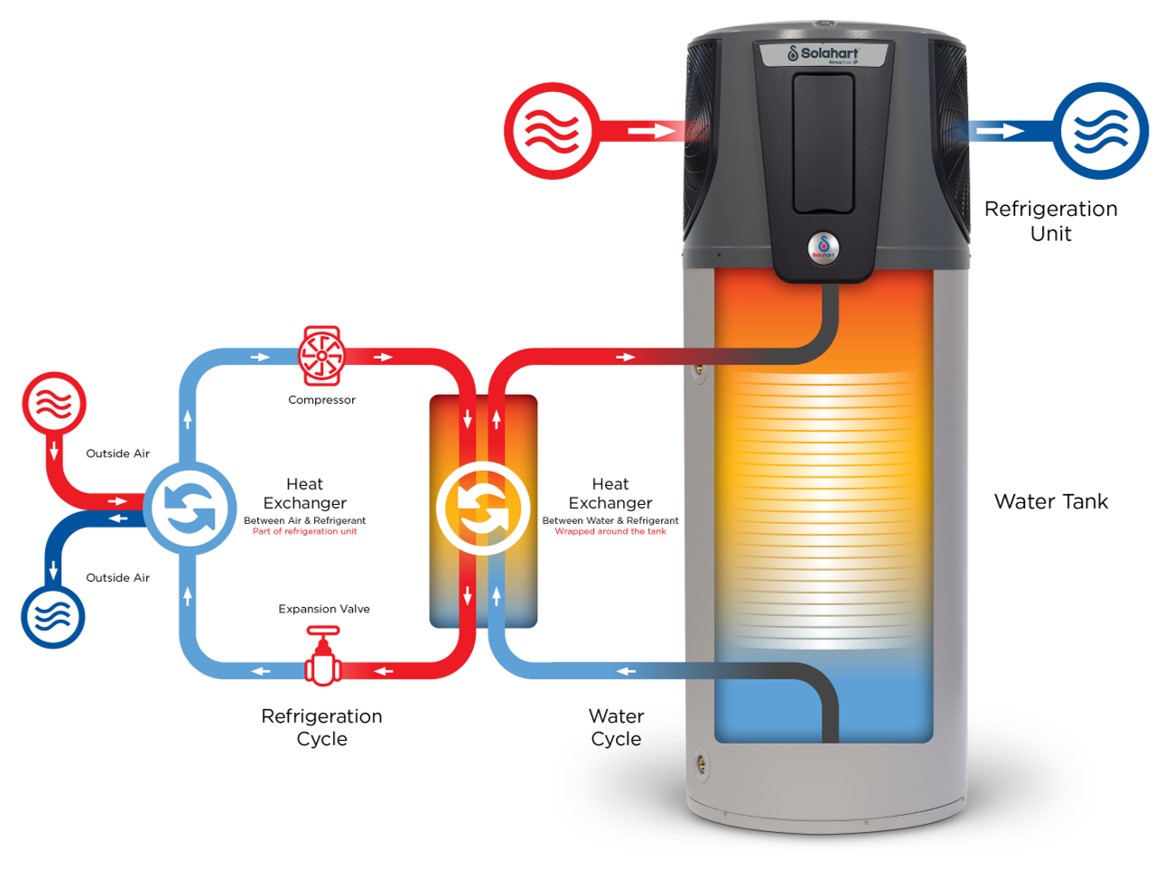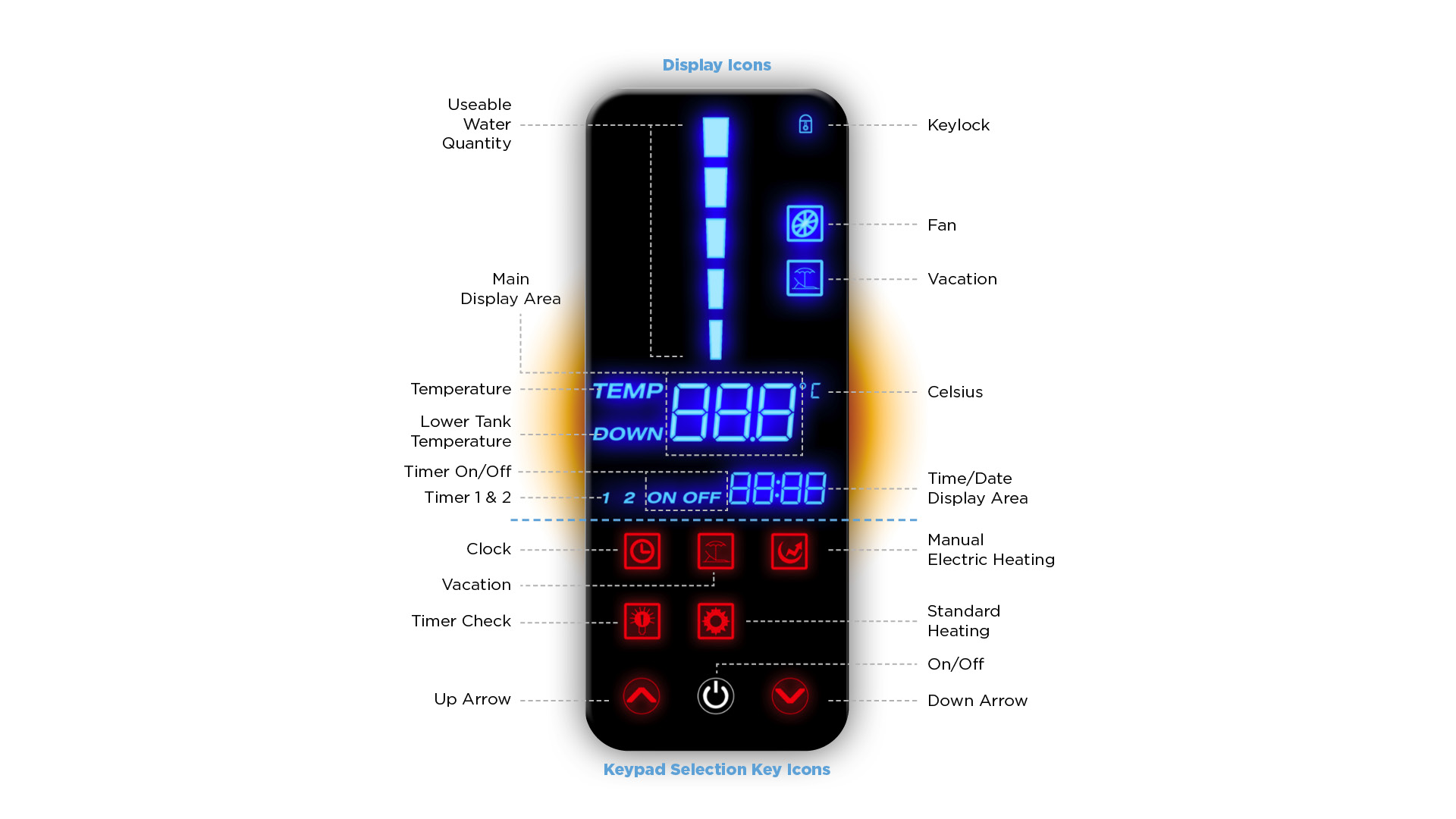Atmos-Frost: Key Attributes
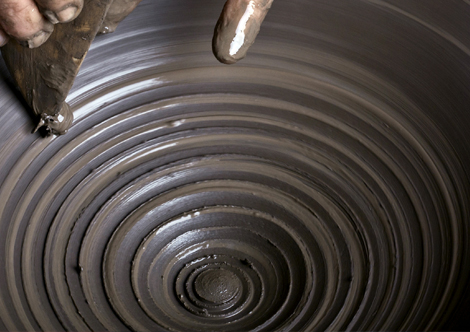
The enamel coating and steel plate technology reduce the risk of corrosion and water leakage.
Show less
A bright interactive LED touchscreen display putting control at your fingertips.
Show less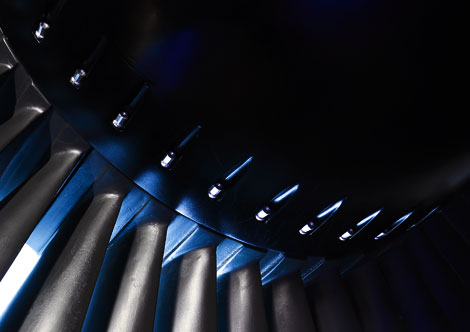
The side fan design provides maximum airflow and protects from the rain.
Show less
Provides a larger contact area to maximise heat transfer efficiency. The wrap-around design of the micro-channels enables installation in harsh water areas.
Show lessKey Features
WHY ATMOS FROST IS A SMART CHOICE
Solahart Atmos-Frost is an energy efficient Heat Pump Water Heater designed to be installed in areas where traditional solar hot water systems may not be suitable. The Solahart Atmos-Frost Heat Pump can be installed in almost any location in Australia, as it is suitable for harsh water, cold climates, and tropical conditions.
- COP OF 4.4: Coefficient of Performance (COP) of 4.4** making it a highly efficient water heater to help reduce energy consumption
- Enamel-Lined Water Tank The high-quality durable enamel coating reduces the risk of corrosion and water leakage.
- Side Fan Design: A design that provides maximum airflow and protects from the rain.
- Micro-channel Technology: Provides a larger contact area to maximise heat transfer efficiency. The wrap-around design of the micro-channels enables installation in harsh water areas.
- Smart LED Controller Display: A bright interactive LED touchscreen display putting control at your fingertips
- Heavy Duty Top Cover: The ASA^ top cover withstands harsh weather conditions.
*Warranty Details
- 7 years cylinder supply
- 3 years cylinder labour
- 3 years sealed system supply and labour
- 2 year parts supply and labour
*The warranty periods above apply to a single-family domestic dwelling only. See the Solahart warranty set out in the Owner’s Guide and Installation Instructions. For more details call Solahart Australia 1300 769 475.
Without limiting the warranty periods shown above, a 5-year whole-of-product warranty applies to the installation of a Solahart Frost 270QDR Heat Pump where:
a) A hot water rebate has been received under Solar Victoria’s Solar Homes Program for a heat pump water heater installed from 1 July 2023, and / or
b) Victorian Energy Efficiency Certificates (VEECs) have been created for a heat pump water heater installed from 1 February 2025.
For further details, call 1300 769 475. Proof of receipt of the rebate and / or proof of VEECs being created, i.e. installation quote showing number of VEECs and dollar value, plus proof of purchase (as applicable) must be produced at the time of the service call.
All other applications have a 3/1/1 warranty; 3-year cylinder supply, 1-year cylinder labour, 1-year parts, including labour.
** Testing condition: 19°C/15°C (Dry bulb/Wet bulb) ambient air temperature, relative humidity of 62% and heating water from 8°C to 60°C.
^ Acrylonitrile Styrene Acrylate (ASA) is an amorphous thermoplastic with improved weather resistance.
Atmos Frost 270QDR Technical Specifications
| Technical | |
|---|---|
| Storage Capacity (Litres) | 270 |
| Boost Capacity (litres) | 195 |
| Dimensions H x W x D (mm) | 1825 x 725 x 690 |
| Weight - Empty (cartoned) (kg) | 145 |
| Weight - Full (kg) | 405 |
| Temperature Setting (°C) | 60 |
| Maximum Rated Power Input @ 240 V (Watts) | 3600 |
| Rated Heat Pump Power Input (Watts) | 985 |
| Refrigerant | R513A |
| Element Size (kW) | 2.4 |
| Noise Rating @ 1 m [dB(A)] | 47 |
| IP Rating | IP24 |
| Average Coefficient of Performance (COP) @ 19°C Ambient air temperature & 8°C to 60°C water temperature | 4.4* |
| Average Heat Pump Heating Capacity @ 19°C Ambient air temperature & 8°C to 60°C water temperature (kW) | 4.0* |
| Water Connections & Settings | |
| Water Inlet/Outlet Connections | Rp 3/4 |
| Temperature Pressure Relief Valve Setting (kPa) | 1000 |
| ECV Setting (kPa) (not supplied) | 850 |
| Maximum Mains Supply Pressure | |
| With ECV (kPa) | 680 |
| Without ECV (kPa) | 800 |
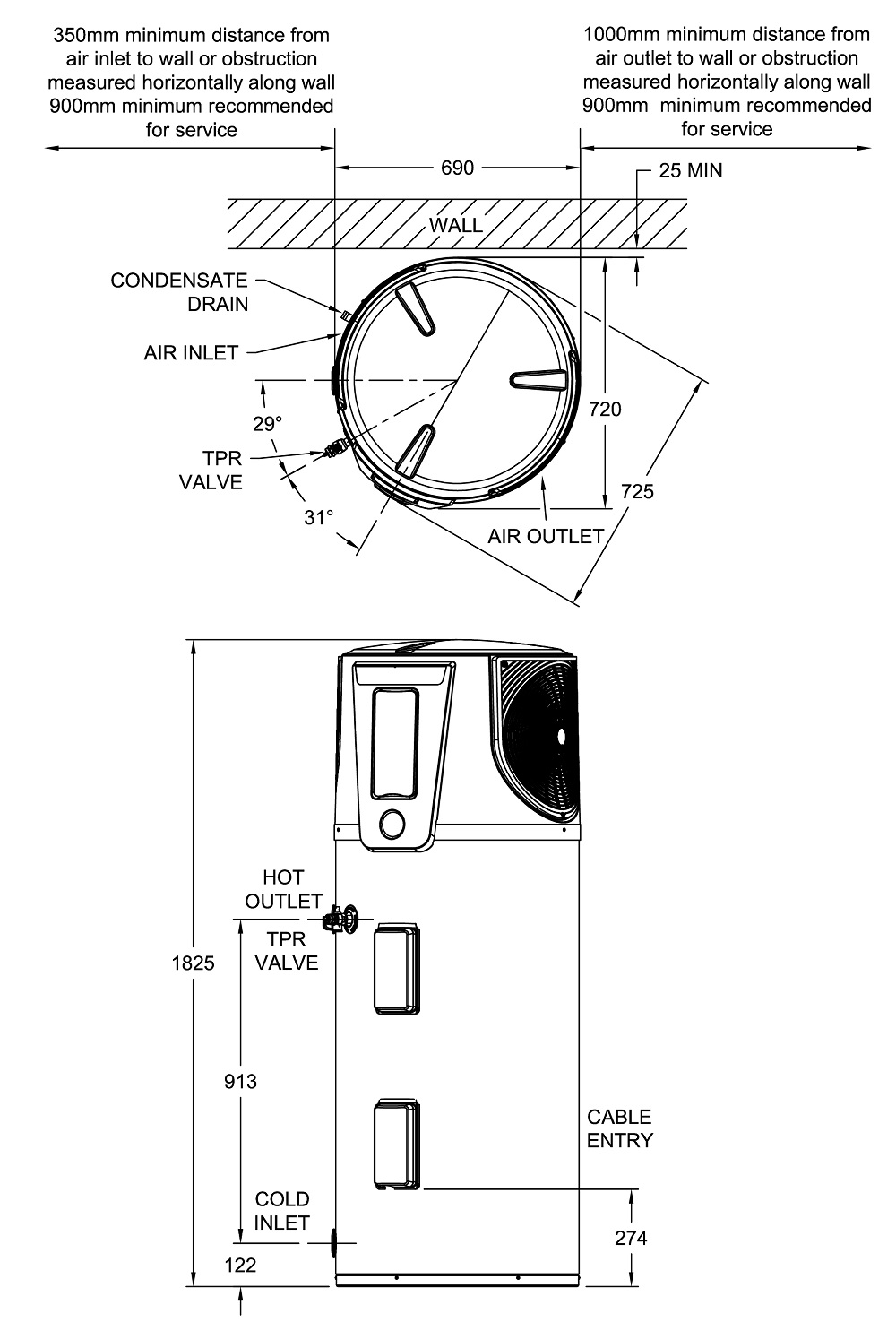
* COP – The Coefficient of Performance for a heat pump is the ratio of how much useful heat it produces for water heating to the power input into the water heater. The higher the COP number, the more efficient the heat pump is. The actual COP of the product at any given time will be impacted by a number of factors, including the ambient air and cold-water inlet temperatures at the place of installation and time of day / season of operation.
An Average Coefficient of Performance (COP) of 4.4 was measured under test conditions with an ambient air temperature of 19˚C/15˚C (Dry Bulb/Wet Bulb), heating of the water from 8˚C to 60˚C during water heater operation and a power supply of 240 V~ 50 Hz. The Heat Pump average heating capacity in Watts (and converted to kilowatts – kW) and its water heating capacity in Litres / hour were calculated from the results of this test.
Average Heat Pump Heating Capacity kW – This is how much heating power is put into the water during the heating cycle by the heat pump. It is expressed as an average due to the changes in heating power from the refrigeration cycle as the water is being heated and its temperature increases during the heating cycle.




